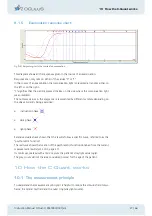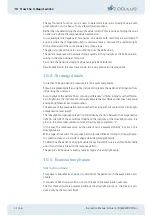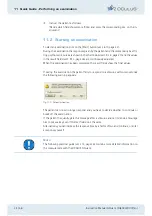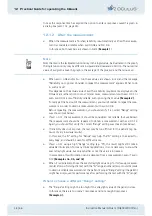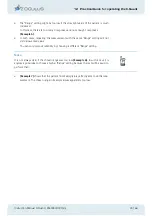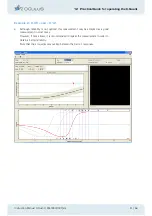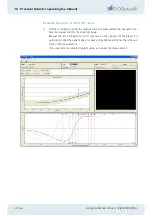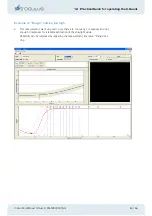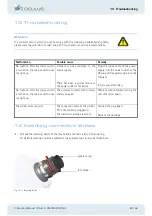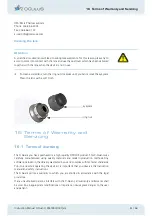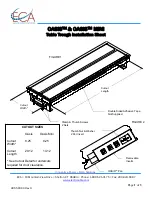
12 Practical Guide for operating the C-Quant
36 / 56
Instruction Manual C-Quant ( G/80000/1007/en)
Eye
If both eyes are to be measured, start with the better/dominant eye.
The other eye should be occluded with an eye patch or something similar.
Correction
The refractive correction is not critical for the C-Quant measurement.
A deviation of the best corrected value of up to 2 diopters can easily be tolerated.
Cylindrical errors of up to 3 diopters may be corrected with the spherical equivalent.
It is recommended to use only one trial lens for refractive correction, unless the cylindrical
correction is more than 3 diopters.
Î
For visual acuities down to 0.2, it should still be possible to perform the test.
For visual acuities of 0.1 or lower, the test will be very difficult to perform.
Range
The default "Range" setting is “E moderate”. This will be a proper setting in many cases, if
straylight increase is mild.
If high straylight values are expected (e.g. with cataract or corneal turbidities), settings “F
medium log(s)” or “G high log(s)” must be used.
“G” can also be used if you want an easy (first) test. The response pattern obtained will
guide you how to proceed.
Î
The chosen "Range" setting might turn out to be not optimal for the actual patient.
Depending on the circumstances, it might be necessary to repeat the measurement
with a different "Range" setting in order to obtain a (more) reliable measurement
(see “After the measurement” below).
12.1.1
Patient instruction
Eye position
Î
Position the eye close to the eyepiece, keeping a minimal distance (figure a).
A slight touch is good, but not firmly against it. If the eye is tightly against the eye-
piece, condensation may form on the lens of the C-Quant, which will influence the
measurement outcome (figure b).
Also, if the eye is too far from the eyepiece, this will give a wrong test result
(figure c).
Keep your eye normally open and do not squeeze, as this may also influence the
measurement outcome (figure d)






